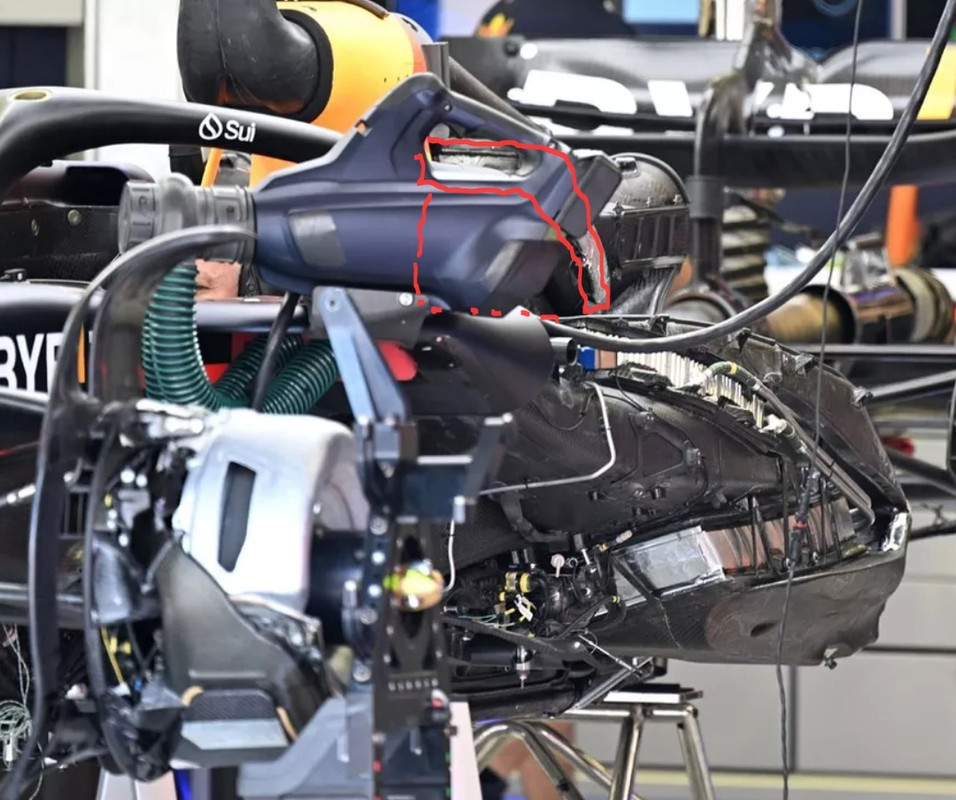
Interesting! So I was wrong after all and the inlets behind the driver's helmet are actually for cooling. I'm still wondering how this turbulent air is actually supposed to dissipate a lot of heat, but either Red Bull has actually found a way to make this work, or it's just to add a small, otherwise missing, minimal cooling capacity. Either way, either Honda seems to have reduced the required cooling capacity quite significantly, or Red Bull seems to have increased the performance of the cooling system considerably. Or the turbulence in the area in question has been reduced so that this air can be used adequately for cooling. Whatever the case may be - a great achievement for which I have great respect!
I'm really looking forward to the performance of the car and how much progress has been made compared to the RB19, because this solution undoubtedly increases the CoG and I'm curious to see to what extent the aerodynamic advantages outweigh the disadvantages. In the meantime, I also doubt an improvement in pitch/yaw intertia due to the certainly greater distance to the CoG. Now I understand James Allison's comments, because this solution is completely contrary to what you would expect regarding the importance of CoG, Pitch/Yaw Inertia for performance. But it seems that with these new ground effect cars, the biggest performance generator is actually the undercut due to its importance for the ground and diffuser, which in turn could possibly mean that other teams could have greater development potential. However, as this solution proves, you never know what's coming. Technically, these future developments for 2024 and 25 will definitely be very interesting!





